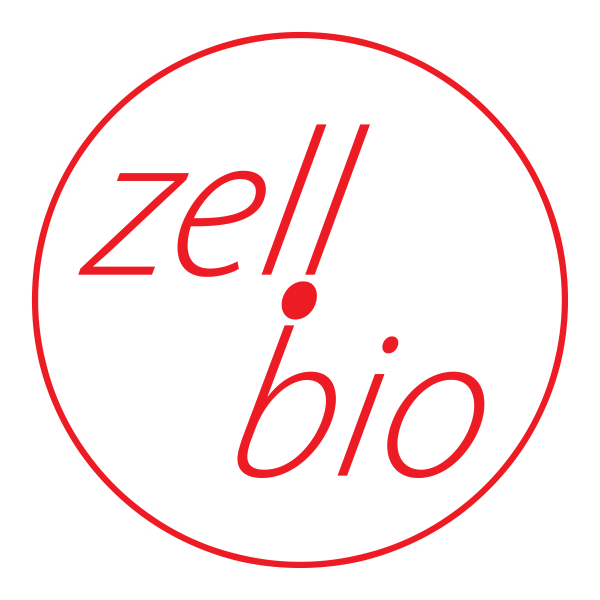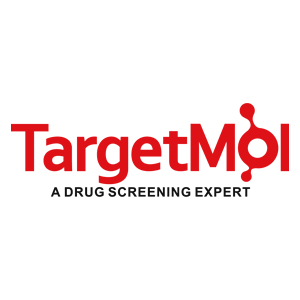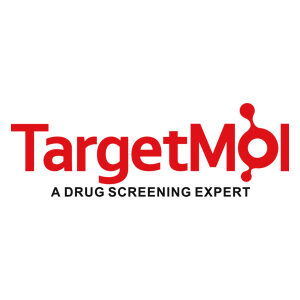Description
| Description | Gefitinib is an EGFR tyrosine kinase inhibitor and can inhibit Tyr1173, Tyr992, Tyr1173 and Tyr992 (IC50s: 37/37/26/57 nM). |
| Targets&IC50 | Tyr1173:26 nM (NR6W cells), Tyr1173:37 nM (NR6wtEGFR cells), Tyr992:37 nM (NR6wtEGFR cells) , Tyr992:57 nM (NR6W cells) |
| In vitro | Gefitinib (0.001–2 μM) effectively inhibited all tyrosine phosphorylation sites on EGFR in both the high and low-EGFR-expressing cell lines. The calculated IC50 values for these sites were 37 nM (Tyr1173), 37 nM (Tyr992), 26 nM (Tyr1173) and 57 nM (Tyr992) in, respectively, the low and high EGFR expressing cell lines. As opposed to the level of ERK phosphorylation the high EGFR-expressing cell line had a substantial level of PLC-γ phosphorylation after EGF stimulation as compared to the low-EGFR- and -EGFRvIII-expressing cell lines, respectively. Gefitinib effectively blocked this phosphorylation (IC50: 27 nM). The NR6wtEGFR and NR6M cell lines had low levels of PLC-γ phosphorylations but the level in the NR6M cell line was more resistant to inhibition by gefitinib (IC50: 43/369 nM) [1]. Treatment with gefitinib alone lead to an inhibition of CALU-3 and GLC82 cell proliferation, with an IC50 of 2 μmol/L. H1299, H460, H1975, CALU-3 GEF-R, and A549 cancer cell lines showed a limited sensitivity to gefitinib treatment with about 80% to 90% cells surviving at 5 μmol/L dose of EGFR inhibitor [2]. Gefitinib (0.5 μM, incubated days 1–5) significantly increased the anti-proliferative effect of fractionated radiation treatment (2 Gy/day, days 1–3) on LoVo cells grown in vitro [3]. |
| In vivo | Treatment with metformin or gefitinib (150 mg/kg daily orally by gavage), as single agents, caused a slight decrease in tumor size as compared with control untreated mice. Treatment with the combination of metformin and gefitinib induced a significant reduction in tumor growth [2]. The response of the LoVo xenografts to 5 Gy plus ZD1839 (100 mg/kg) was significantly enhanced compared with that seen with either drug or radiotherapy alone [3]. Compared with that in the control group, metastatic tumor burden did not increase after the start of gefitinib treatment, and the average bioluminescence value of tumors in the gefitinib treatment group was 24 × 10^6 photons/s on the final day of the study [4]. |
| Cell Research | The human NSCLC H1299, H1975, A549, H460, GLC82, H460, and CALU-3 cell lines were provided by the American Type Culture Collection and maintained in RPMI-1640 supplemented with 10% FBS in a humidified atmosphere with 5% CO2. CALU-3 GEF-R is a cell line obtained in vitro as previously described. Briefly, over a period of 12 months, human CALU-3 lung adenocarcinoma cells were continuously exposed to increasing concentrations of gefitinib. The starting dose was the dose causing the inhibition of 50% of cancer cell growth (IC50; gefitinib, 1 μmol/L). The drug dose was progressively increased to 15 μmol/L in approximately 2 months, to 20 μmol/L after other 2 months, to 25 μmol/L after additional 2 months, and, finally, to 30 μmol/L for a total of 12 months. The established resistant cancer cell lines were then maintained in continuous culture with the maximally achieved dose of each TKI that allowed cellular proliferation (30 μmol/L for each drug) [2]. |
| Animal Research | Four- to 6-week old female balb/c athymic (nu+/nu+) mice were purchased from Charles River Laboratories. Mice were acclimatized for 1 week before being injected with cancer cells and injected subcutaneously with 107 H1299 and CALU-3 GEF-R cells that had been resuspended in 200 μL of Matrigel. When established tumors of approximately 75 mm3 in diameter were detected, mice were left untreated or treated with oral administrations of metformin (200 mg/mL metformin diluted in drinking water and present throughout the experiment), gefitinib (150 mg/kg daily orally by gavage), or both for the indicated time periods. Each treatment group consisted of 10 mice. Tumor volume was measured using the formula π/6 × larger diameter × (smaller diameter)2. Tumor tissues were collected from the xenografts and analyzed by Western blotting for the expression and activation of EGFR, AMPK, mitogen-activated protein kinase (MAPK), and S6 [2]. |
| Source |
| Synonyms | ZD1839 |
| Molecular Weight |
446.91 |
| Formula | C22H24ClFN4O3 |
| CAS No. | 184475-35-2 |
Storage
Powder: -20°C for 3 years
In solvent: -80°C for 2 years
Solubility Information
DMSO: 44.7 mg/mL (100 mM)
Ethanol: 4.5 mg/mL (10 mM)
( < 1 mg/ml refers to the product slightly soluble or insoluble )


